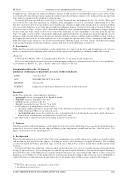Page 493 - SAIT Compendium 2016 Volume2
P. 493
IN 51 (3) Income Tax acT: InTeRPReTaTIon noTes IN 53 (2)
brought into use. Such interest and related nance charges would not have been deductible under section 24J(2) in the year incurred because that provision requires the interest and related nance charges to be deducted from income from trade and to be incurred in the production of the income.
Section 11(bA) was repealed by section 30(1)(a) of the Taxation Laws Amendment Act No. 24 of 2011. The repeal of section 11(bA) came into operation on 1 January 2012 and applies to years of assessment commencing on or after that date. Section 11(bA) was repealed because it had become obsolete in light of the introduction of section 11A which also covers the deduction of pre-trade interest and related nance charges. Section 11(bA) and section 11A differ in at least two respects. First, section 11(bA) allowed the deduction of pre-production interest and nance charges against income from any trade, while section 11A restricts the deduction of such expenditure to income from the speci c trade. Secondly, section 11(bA) contained the additional requirement that the asset must have been brought into use for purposes of the relevant trade before the interest and related nance charges could be deducted. While section 11A does not require the asset to have been brought into use it does require the speci c trade to have commenced and limits the deduction of pre-trade expenses to the income from that trade. With the repeal of section 11(bA), all deductions relating to pre-production interest and related nance charges will now be dealt with under section 11A.
5. Conclusion
While this Note provides general guidance on the application of section 11A, the facts and circumstances of each case must be considered in determining when and if pre-trade expenses will qualify for a deduction under this section.
(Footnotes)
1 345 F.2d 901 (4th Cir. 1965). See Interpretation Note No. 33 for more details on this case.
2 For a case involving the incurral of expenses in maintaining a rubber tree plantation before the trees were productive,
see Vallambrosa Rubber Co., Ltd., v Farmer (Surveyor of Taxes) 5 TC 529.
Interpretation Note: No. 53 (Issue 2)
Limitation of Allowances Granted to Lessors of Affected Assets
DATE: ACT: SECTION: SUBJECT:
Preamble
9 October 2015
INCOME TAX ACT 58 of 1962
Section 23A
Limitation of Allowances Granted to Lessors of Affected Assets
In this Note unless the context indicates otherwise –
• ‘paragraph’ means a paragraph of the Eighth Schedule; • ‘Schedule’ means a Schedule to the Act;
• ‘section’ means a section of the Act;
• ‘the Act’ means the Income Tax Act 58 of 1962;
• for the purposes of interpreting section 23A(2) –
o ‘speci ed capital allowances’ means the sum of the allowances referred to in sections 11(e) and (o), 12B, 12C, 12DA, 14bis and 37B(2)(a) on ‘affected assets’;
o ‘net rental income’ means the taxable income, as determined before deducting the speci ed capital allowances, derived from ‘rental income’ as de ned in section 23A(1); and
• any other word or expression bears the meaning ascribed to it in the Act.
1. Purpose
This Note provides clarity and guidance on the application of section 23A, which ring- fences speci ed capital allowances granted to a lessor for certain aircraft, ships, machinery, plant, implements, utensils and articles (‘affected assets’)* let under a lease that is not an ‘operating lease’.†
2. Background
Before the introduction of section 23A in 1984, it was commonplace for certain taxpayers to acquire assets such as plant and machinery and aircraft for the purpose of letting in order to take advantage of capital allowances. The resulting accelerated capital allowances generated large assessed losses, which were used to shield other taxable income from taxation.
Section 23A limits the deduction of the speci ed capital allowances to a lessor’s taxable income derived from the letting of ‘affected assets’, before taking into account the speci ed capital allowances. Any speci ed capital allowances not allowed because of the limitation are carried forward to the next year of assessment and, subject to any section 23A limitation, are available for set-off against any net rental income from the letting of affected assets. A loss attributable to capital allowances is thus ring-fenced, and cannot be set off against other taxable income earned by the taxpayer.
* The term ‘affected asset’ is de ned in section 23A(1). † As de ned in section 23A(1).
saIT comPendIum oF Tax LegIsLaTIon VoLume 2 485


